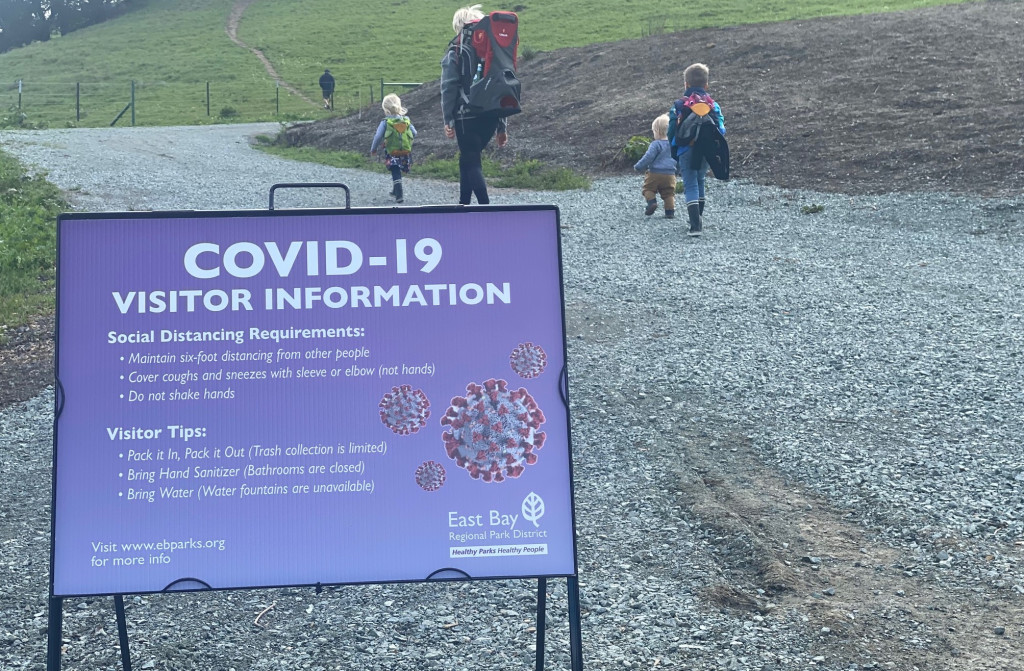As Gov. Gavin Newsom and other officials plan to ease strict stay-at-home orders, a major new study delivers sobering news: Unless hospitals boost capacity, or a treatment or vaccine is developed, a strategy of intermittent “social distancing” may be needed for the next two years.
The research, published Tuesday in the journal Science, shows that while one-time social distancing may suppress the number of critically ill patients, infections will resurge once these measures are lifted, overwhelming hospitals.
Researchers at Harvard’s prestigious Harvard T.H. Chan School of Public Health conceded that repeated restrictions would have profound economic, social and educational consequences.
But this strategy – lifting and re-imposing restrictions such as school, business and event closures — will create smaller outbreaks of illness that can be better managed by hospitals, saving lives, they said.
Over time, this approach will lead to the build up of so-called ‘herd immunity,’ when so many people are immune that an infected individual has little chance of coming into contact with someone who is vulnerable, they said.
“Several rounds of social distancing will be required to get us to ‘herd immunity,’ in the absence of vaccination,” said Harvard epidemiologist and study co-author Dr. Marc Lipsitch at a Tuesday press conference.
The team warned of an intense outbreak next winter, when social distancing is relaxed and virus transmissibility is heightened, overlapping with flu season and stressing hospital capacity.
“Predicting an end to the epidemic in the summer, when a majority of population is susceptible…is not consistent with what we know about the spread of infections,” said Lipsitch.
The optimal distancing strategy is “ ‘on’ and ‘off” – with the ‘on’ period bringing numbers down, so when the ‘off’ period happens, the number of cases is small enough to avoid overwhelming our intensive care capacity,” he said.
It’s a balancing act, he added. Strict measures will more quickly reduce the number of illnesses and deaths. Less strict measures means greater illness — and faster ‘herd immunity’ in the community.
“It’s all a trade off, in terms of cases now vs. cases later,” he said.
The goal, said co-author Stephen M. Kissler, is to flatten the curve of new cases and approach ‘herd immunity’ as slowly as possible.
“Intermittent ‘distancing’ measures are as close as we can get to reaching the optimal level of immunity, without overshooting it,” causing an unnecessary spike in cases and deaths, said Kissler, an expert in the use of mathematical models to study the spread of infectious disease.
Their mathematical models of various disease trajectories point to the urgent need for innovation to bring the pandemic under long-term control.
“New therapies and vaccines… all of those can change what happens,” said Kissler.
It is also essential to conduct long-term serology studies, which measure antibodies in the blood of infected individuals, so we know how many people are protected, the team added.
For now, “unless there is some enormously larger ‘herd immunity’ than we are aware of, the large majority of the population in this country and in most parts of the world remains susceptible,” said Lipsitch.
Using data on seasonality from known human coronaviruses and assuming some protection, called “cross-immunity” between the COVID-19 virus and other coronaviruses, the team built multi-year models.
They used this model to investigate for what social distancing measures need to stay in place to maintain control of the virus, then projected the dynamics of the pandemic over the next five years.
Their models did not look at the many ways that different strategies — such as open schools but closed businesses, or small event but not large events — would affect outcomes.
And there’s one key factor that is unknown: the rate at which viral immunity might wane, over time.
One of their models shows a resurgence in the COVID-19 virus could occur as far in the future as 2025, if a vaccine is not developed.
The models also made these points:
- an outbreak can occur at any time of year, regardless of season. But winter/spring outbreaks could be less severe, while autumn/winter outbreaks could be more severe.
- If immunity is permanent, the virus could disappear for five or more years after causing a major outbreak.
- If immunity isn’t permanent, the virus will likely enter into regular long-term circulation, like influenza.
- Even if immunity just last for two years, “cross immunity” from related viruses could eliminate the transmission for up to three years before a resurgence in 2024, if it doesn’t fully die out.
- There could be geographic differences in seasonal variation, like flu. And regions with a smaller number of cases during the initial wave could have larger recurrent waves later.
The team stopped short of making a formal recommendation to leaders.
“Our goal in modeling such policies is not to endorse them but to identify likely trajectories of the epidemic under alternative approaches,” they wrote.
“We do not take a position on the advisability of these scenarios given the economic burden that sustained distancing may impose,” they wrote, “but we note the potentially catastrophic burden on the healthcare system that is predicted if distancing is poorly effective and/or not sustained for long enough.”



















